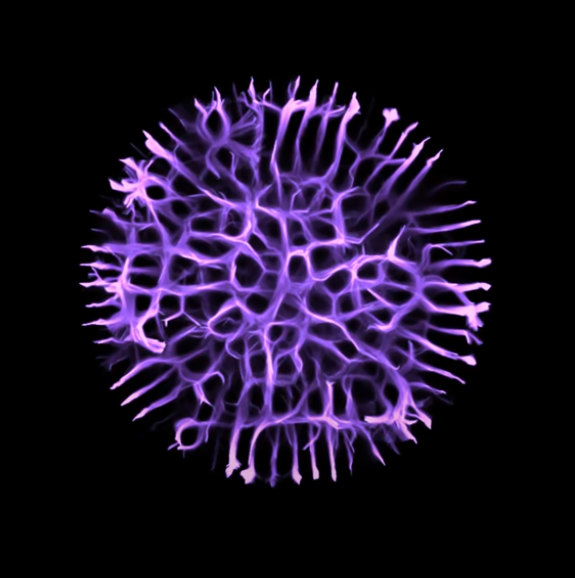Sebastian Lague is youtuber whos content is focused on programming and game development. Exploring a wide variety of ideas throughout his video series, he focuses on slime-molds and ants in this particular video. The film itself takes a number of twists and turns, but it’s the end of the video that I am primarily focused on. After creating a model to solve the “traveling salesman” problem with the tactics of ants, Sebastian begins be defining “agents” in a development space on his computer. These agents are represented by individual points that light up a pixel on the screen. The agents move linearly at a set velocity, and bounce off the boundaries of the development space akin to an early 2000’s DVD screensaver. He writes these agents as a compute-shader in order run the computations in parallel on his graphics card rather than his CPU (which is exponentially faster). Sebastian then adds a fading “tail” to each of the agents, eventually giving each agent a weighted propensity to follow any tail it comes into contact with. With this simple set of rules, a seemingly absurd emergent behavior follows. There are plenty of examples I could have chosen that demonstrate physical instances of flow, but I am fascinated by the way that such a facile, linear model creates exceedingly organic, fluid-esque shapes. The way that “flow” emerges out of this video made it a clear choice in my mind upon the assignment of this task.
Best Of Web 2022 – Max Patwardhan
Categories
Search for content or authors
Flow Vis Guidebook
- Introduction to the Guidebook
- Overview 1: Phenomena. Why Does It Look Like That?
- Overview 2: Visualization Techniques
- Overview 3: Lighting
- Overview 4 - Photography A: Composition and Studio Workflow
- Overview 4 - Photography B: Cameras
- Overview 4 - Photography C: Lenses - Focal Length
- Overview 4 - Photography C: Lenses - Aperture and DOF
- Overview 4: Photography D: Exposure
- Overview 4 - Photography E - Resolution
- Overview 5 - Post-Processing
- Clouds 1: Names
- Clouds 2: Why Are There Clouds? Lift Mechanism 1: Instability
- Clouds 3: Skew - T and Instability
- Clouds 4: Clouds in Unstable Atmosphere
- Clouds 5: Lift Mechanism 2 - Orographics
- Clouds 6: Lift Mechanism 3 - Weather Systems
- Boundary Techniques - Introduction
- Dye Techniques 1 - Do Not Disturb
- Dye Techniques 2 - High Visibility
- Dye Techniques 3 - Light Emitting Fluids
- Refractive Index Techniques 1: Liquid Surfaces
- Refractive Index Techniques 2: Shadowgraphy and Schlieren
- Particles 1- Physics: Flow and Light
- Particles 2: Aerosols
- Particles 3: In Water
- Particles 4 -Dilute Particle Techniques
- Art and Science
- TOC and Zotpress test
- Photons, Wavelength and Color

1 Comment. Leave new
First prize: You really thought outside the box on this. You explained Sebastian Lague’s work to me once before and I finally took the time to see what it was about. I feel like there’s a lot we could learn about natural processes by modeling flows with simple constraints other than the physical ones we’re used to dealing with.